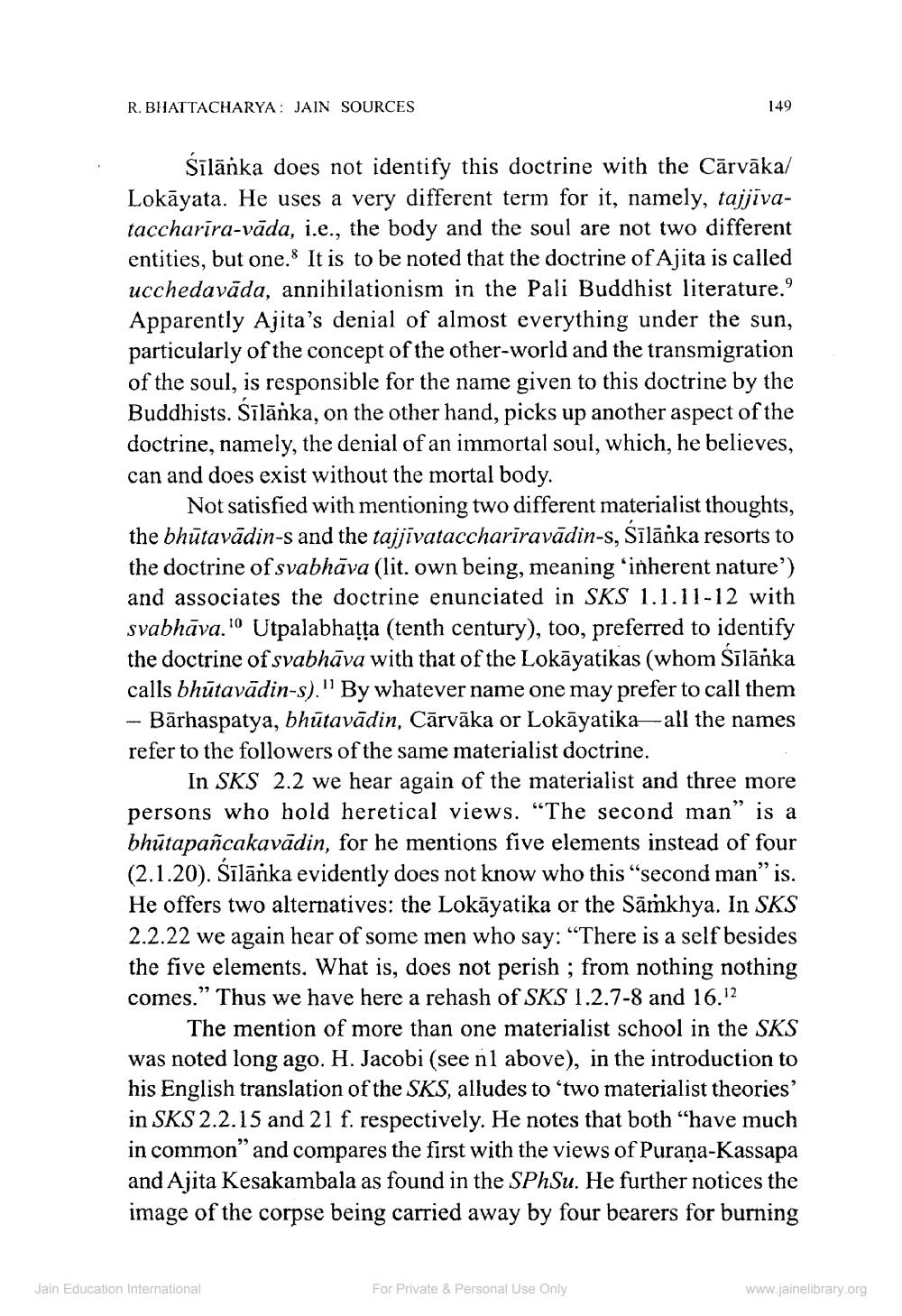________________
R. BHATTACHARYA: JAIN SOURCES
8
Śīlānka does not identify this doctrine with the Carvaka/ Lokayata. He uses a very different term for it, namely, tajjivataccharira-vāda, i.e., the body and the soul are not two different entities, but one. It is to be noted that the doctrine of Ajita is called ucchedavāda, annihilationism in the Pali Buddhist literature." Apparently Ajita's denial of almost everything under the sun, particularly of the concept of the other-world and the transmigration of the soul, is responsible for the name given to this doctrine by the Buddhists. Sīlānka, on the other hand, picks up another aspect of the doctrine, namely, the denial of an immortal soul, which, he believes, can and does exist without the mortal body.
Not satisfied with mentioning two different materialist thoughts, the bhūtavādin-s and the tajjivatacchariravādin-s, Śīlānka resorts to the doctrine of svabhāva (lit. own being, meaning ‘inherent nature') and associates the doctrine enunciated in SKS 1.1.11-12 with svabhava.10 Utpalabhaṭṭa (tenth century), too, preferred to identify the doctrine of svabhāva with that of the Lokayatikas (whom Śīlānka calls bhūtavādin-s)." By whatever name one may prefer to call them - Bārhaspatya, bhūtavādin, Cārvāka or Lokāyatika—all the names refer to the followers of the same materialist doctrine.
In SKS 2.2 we hear again of the materialist and three more persons who hold heretical views. "The second man' is a bhutapañcakavādin, for he mentions five elements instead of four (2.1.20). Śīlānka evidently does not know who this "second man" is. He offers two alternatives: the Lokāyatika or the Samkhya. In SKS 2.2.22 we again hear of some men who say: "There is a self besides the five elements. What is, does not perish; from nothing nothing comes." Thus we have here a rehash of SKS 1.2.7-8 and 16.12
149
Jain Education International
33
The mention of more than one materialist school in the SKS was noted long ago. H. Jacobi (see nl above), in the introduction to his English translation of the SKS, alludes to 'two materialist theories' in SKS 2.2.15 and 21 f. respectively. He notes that both "have much in common" and compares the first with the views of Purana-Kassapa and Ajita Kesakambala as found in the SPhSu. He further notices the image of the corpse being carried away by four bearers for burning
For Private & Personal Use Only
www.jainelibrary.org




